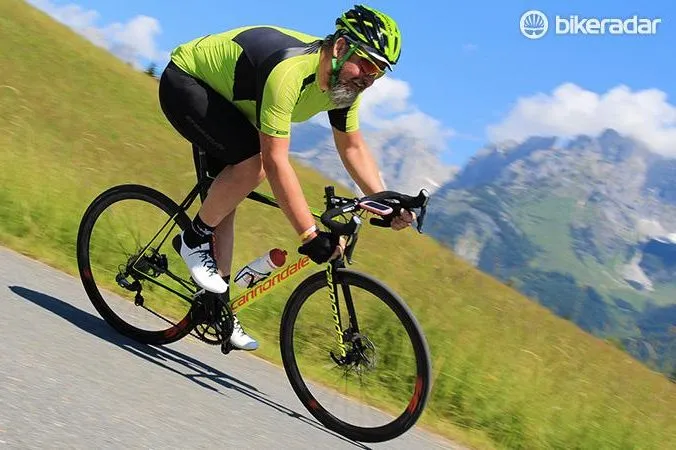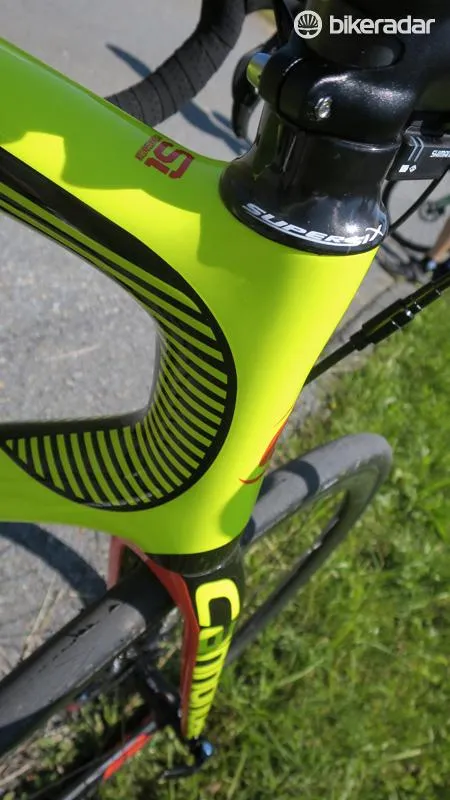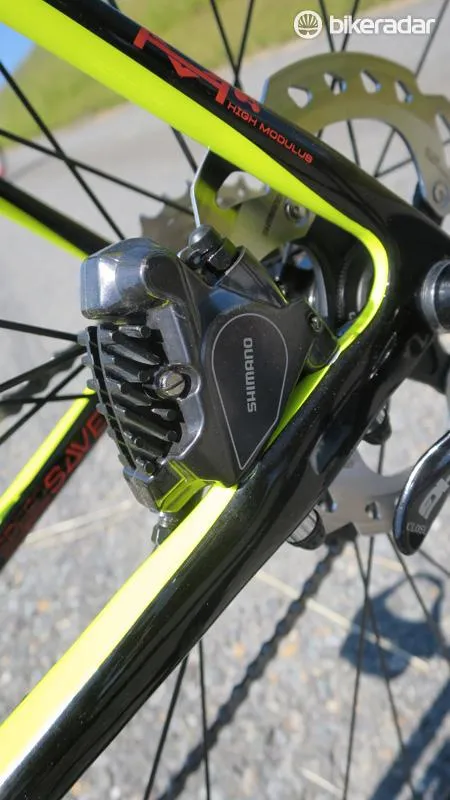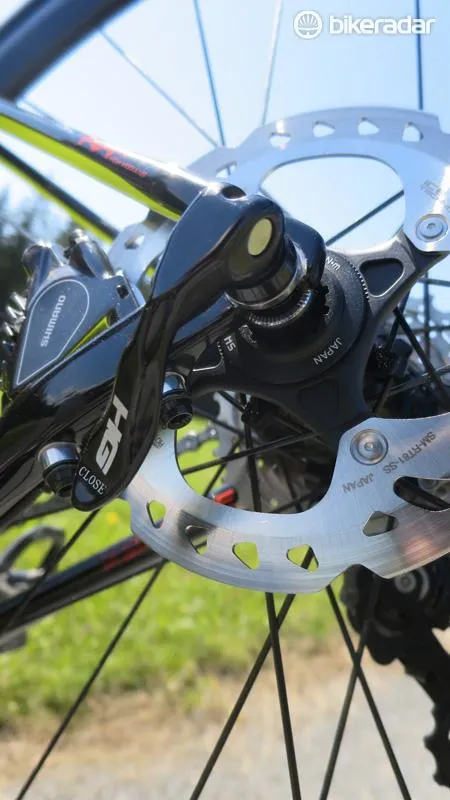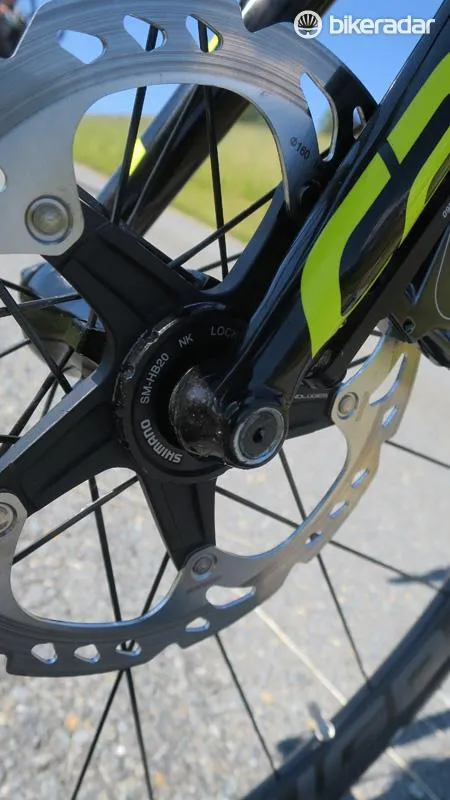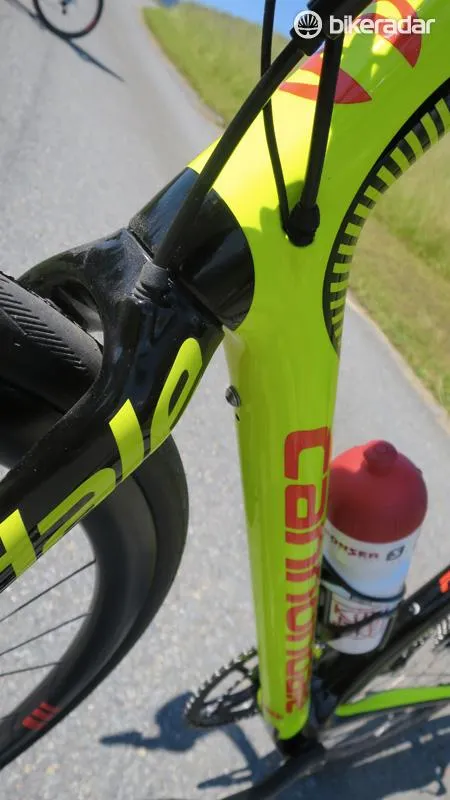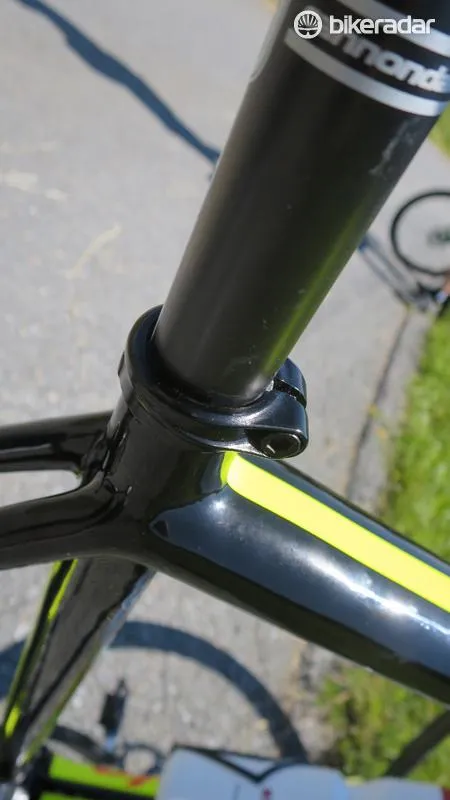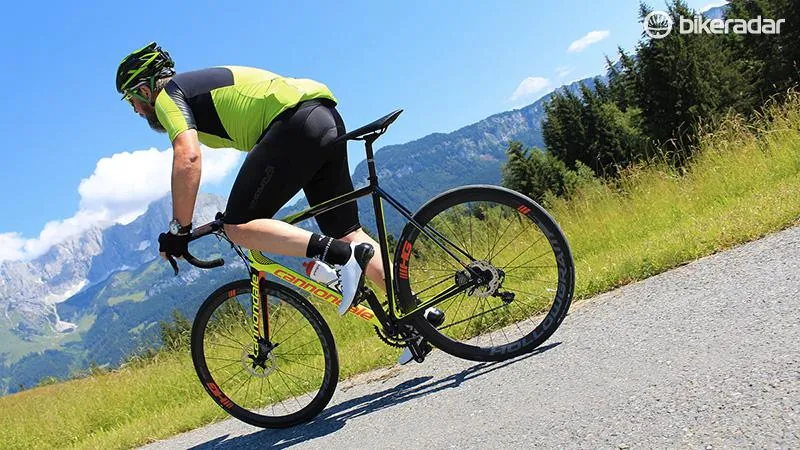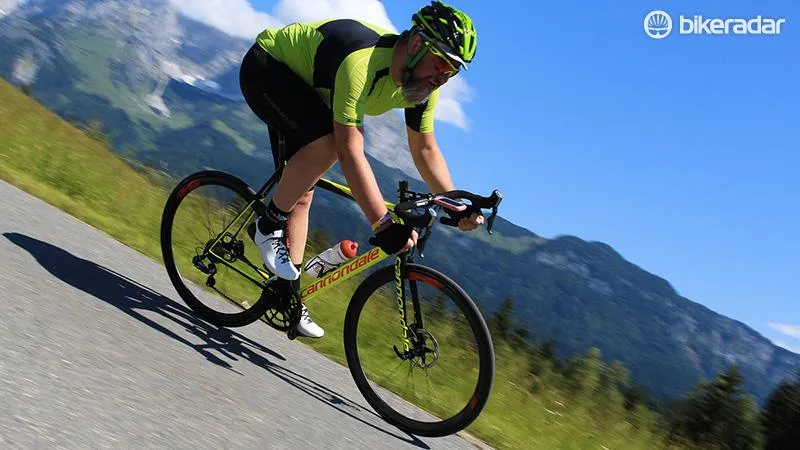Cannondale has held out on rushing a disc version of the SuperSix EVO to market – apparently because the firm wanted to ensure that a disc model would retain its rim-brake sibling's character. It had therefore to share the low 'system weight' (that’s what Cannondale calls the frame, fork, crankset and seatpost), and be stiff and comfortable with it.
- Cannondale puts discs on SuperSix EVO, launches new Optimo alloy bikes
- Cannondale SuperSix EVO Hi-Mod Dura-Ace 2 review
On paper things look promising, with the disc frame tipping the scales at 829g (for a 56cm) and the fork 360g (the standard braked version in a 56cm is 777g and 320g respectively). The overall ‘system weight' is just 120g heavier, and for our test bike the overall weight of 7.3kg is similarly impressive when you consider this one has a basic aluminium stem and bar, a the standard carbon post (no SAVE technology) and a second-tier Si crankset.
The SuperSix disc translation: has it worked?
In short, the disc metamorphosis has worked superbly – we’ve spent lots of time on the rim-braked EVO in various specifications and what’s immediately apparent is just how similar the Hi-Mod Disc feels. The pick-up and acceleration is simply brilliant, meaning the Hi-Mod is so resolutely rock-solid under pedaling that it feels like none of your energy is being wasted in floundering flex from the chassis. It just wants to go and go.
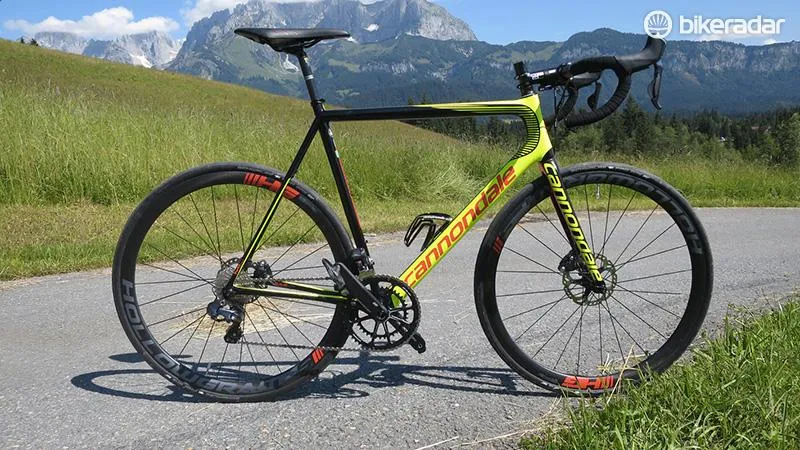
The front end is planted and unwavering; impressively so when you consider that was one of the factors we loved so much about its rim-braked brother. The disc outshines the rim-brake version here, so cornering and sharp steering inputs to avoid potholes are met with total confidence and nothing in the way of even the slightest twitch.
Our test riding in the Austrian Alps obviously included plenty of climbing, and the Hi-Mod was a willing partner. The low weight of the chassis also benefits from the addition of Cannondale’s new carbon Hollowgram wheels. These 35mm deep blunt-aero shaped clinchers have a broad 19mm internal measure and are approved (by Stan's) for tubeless use – ours weren’t set up that way but came with Schwalbe’s impressive Pro one tubeless rubber. The wheels weigh in at 1400g a pair, impressive for a set of disc wheels and a real boon when the road starts to rise.

Where I’d expect the disc to outshine its rim-brake rival is on the descents, and I didn’t get any surprises. Let's not mince words here; the Hi-Mod Disc is one of the finest descending bikes we’ve ever tested. With pinpoint accuracy through tight twisty corners, the bike feels tight and short (Cannondale has cleverly retained short 405mm chainstays rather than longer ‘disc’ ready 415 items).
Any reservations about the EVO’s lack of a rear thru-axle (Cannondale says it chose to stay with a quick-release at the back for weight savings in the hub and for faster wheel changes in race situations) are dispelled as soon as you head downhill and brake hard. There’s not even a peep of brake noise, and no flex induced rub. In fact, Cannondale has beefed up the rear end as much as they can, with the EVO Disc reliiant more on the tapering ‘Delta-Tube’ seat tube and 25.4mm post for its comfort rather than flex from the stays.
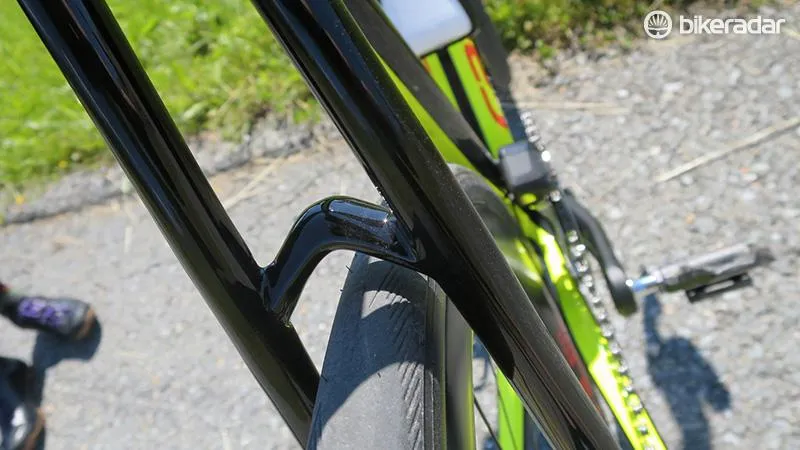
Comfort levels from what's targeted as a pro-level machine are also excellent. The bike's rear (using that slender 25.4mm post) is smoothly supple, aided by the One tyres, which are shaped well over the wide rim. The tyre profile adds oodles of grip, giving you confidence to give it the full beans even on less than perfect surfaces. Up front the fork tracks perfectly with no twist or flex, yet still with enough fore-and-aft compliance to take the sting out of pockmarked roads and the high-frequency vibrations they create.
Not quite perfection
Perfection is a tough thing to achieve, and we'd have to acknowledge that the EVO Disc came up slightly short. That said, the only things I could find that I’d change were the bar and bar tape. The C1 alloy handlebar is light, but the diameter is fairly traditional and in this age of carbon aero and wing shapes it feels small, and a little harsh on this tester's (admittedly big) hands.
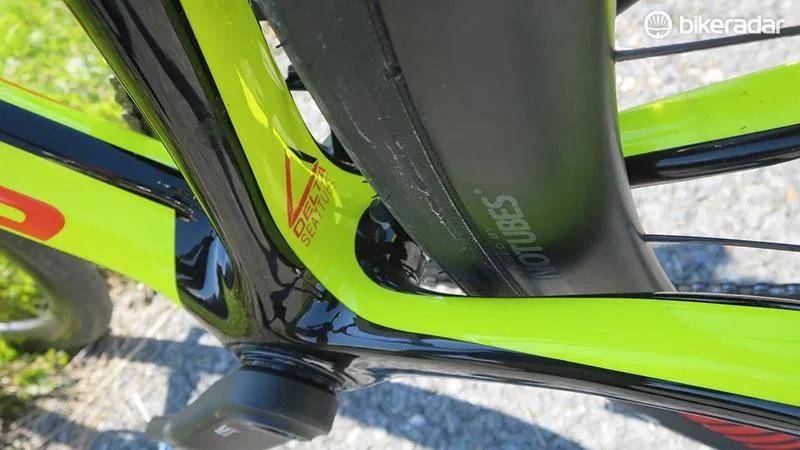
It's wrapped with Fizik’s Classic tape, which looks nice with its foil backed perforations, but like the bar is thin, very thin and offers little in the way of cushioning. On a less compliant and comfortable chassis it’d be more of an issue, but I still can’t understand why Cannondale hasn't chosen to spec its own-brand silicone tape as found on the Synapse, or one from CSG stable mates Fabric.
Initial verdict: smile time
On our rolling test ride the smile never left my face. The EVO is easy to encourage up to a high pace and loves staying there. On the climbs it's willing and on descents it's dive-bomber quick.
Up against the best of the rest – like Focus’ Izalco Max disc and Merida’s Scultura Disc – the EVO can easily hold its own. We can’t wait to get hold of one for some longer testing and put it head to head with its rivals, as we reckon the new Cannondale might just be the one to take the disc-racer crown.
UK readers: pricing for this model is estimated to be in the region of £4,700, but this is subject to change owing to the EU referendum result.
